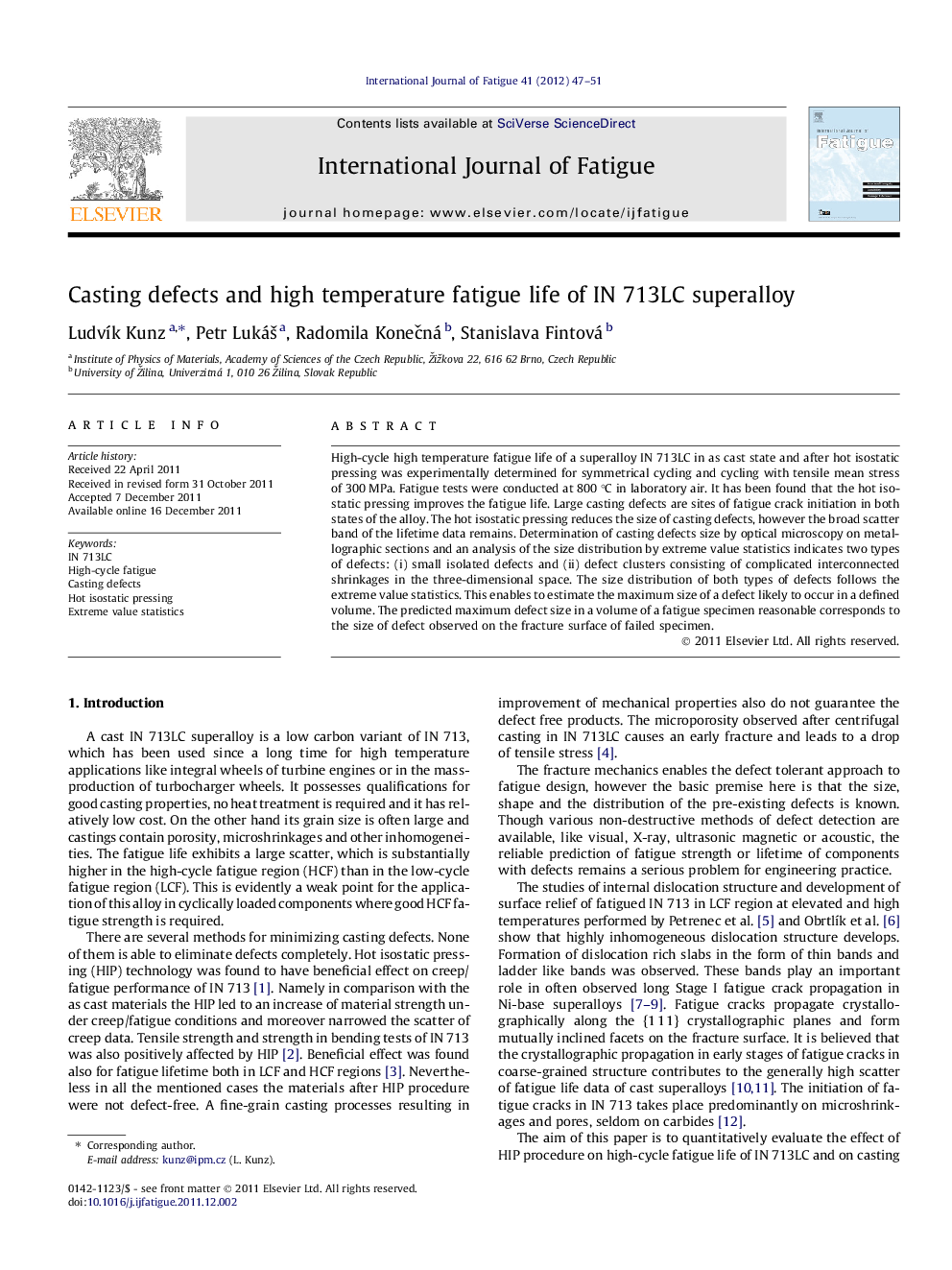| Article ID | Journal | Published Year | Pages | File Type |
|---|---|---|---|---|
| 778342 | International Journal of Fatigue | 2012 | 5 Pages |
High-cycle high temperature fatigue life of a superalloy IN 713LC in as cast state and after hot isostatic pressing was experimentally determined for symmetrical cycling and cycling with tensile mean stress of 300 MPa. Fatigue tests were conducted at 800 °C in laboratory air. It has been found that the hot isostatic pressing improves the fatigue life. Large casting defects are sites of fatigue crack initiation in both states of the alloy. The hot isostatic pressing reduces the size of casting defects, however the broad scatter band of the lifetime data remains. Determination of casting defects size by optical microscopy on metallographic sections and an analysis of the size distribution by extreme value statistics indicates two types of defects: (i) small isolated defects and (ii) defect clusters consisting of complicated interconnected shrinkages in the three-dimensional space. The size distribution of both types of defects follows the extreme value statistics. This enables to estimate the maximum size of a defect likely to occur in a defined volume. The predicted maximum defect size in a volume of a fatigue specimen reasonable corresponds to the size of defect observed on the fracture surface of failed specimen.
